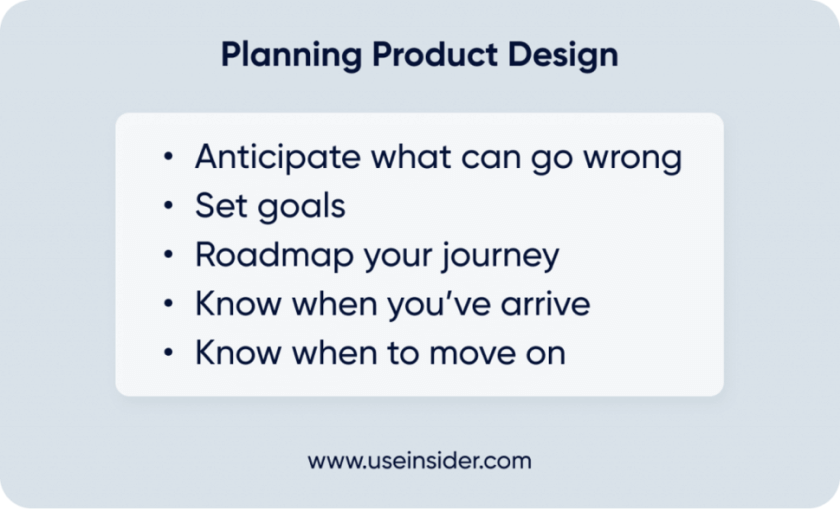 Nicolas Algoedt
Nicolas Algoedt
Jun 10, 2021
 Nicolas Algoedt
Nicolas Algoedt
Jun 10, 2021
What does a VP of Product do?
Lesson 1: The whole is greater than the sum of its parts.
Lesson 2: What isn’t measured doesn’t grow.
Lesson 3: Set metrics before a project begins
Lesson 4: Don’t be too quick to say “NO”
Kickstarter is a two-sided marketplace that brings creators and backers who want to support that idea with the overall mission of helping bring more creative projects to life. Eli is responsible for product design and product management across all their platforms: web, iOS, and Android.
Before Kickstarter, Eli worked on Google Docs, which defined what we now consider to be real-time collaboration. Google Docs democratized access to creative expression and reduced the barrier by being free and instant to anybody with a web browser; they could capture their thoughts and transfer them to somebody else, anywhere in the world.
Are you thinking pebbles or boulders?
Eli’s team was focusing on a ton of small pieces, releases bit and pieces out there, but this wasn’t a story that Google’s audience and the world wanted to latch onto and couldn’t wait to tell their friends about.
Instead of throwing a handful of pebbles into the water, consolidate your ideas into a single concept. When you throw that into the market, you’re going to have a much bigger splash. You’re going to have something your friends will want to tell each other about.
Eli applied this ideology to the way Kickstarters pledged to a project and the difference a deep investment in core user experience could make.
How Kickstarter turned around attrition and started innovating
Kickstarter, like Google Docs, had democratized access to funding– being able to ask total strangers on the Internet for money and have dignity and trust doing it.
When Eli was applying for the company, he learned Kickstarter was experiencing roughly 90% turnover on the product teams due to leadership changes. The platform had experienced rapid growth initially but was at a plateau in terms of the total amount of money raised.
Other issues:
When the press spoke about Kickstater’s innovation, it would be in the past tense, and one question kept cropping up “what went wrong?”
Eli and his team set out to figure out what contributed to these issues and find ways to turn around a less-than-ideal situation.
Do you have a clear value proposition?
One of the most critical things Eli learned and thinks a lot of startups experience is that Kickstarter had found a product market fit out of the gate, but it did it so quickly, but it didn’t understand why it had happened.
At launch, people signed up in droves to projects and began raising vast sums of money. Within the first five years, Kickstarter had several multi-million dollar campaigns, but we’re not aware of their value proposition.
Not knowing your value proposition can be dangerous because, over time, a value proposition tends to change, technology improves, and competitors emerge. And if you don’t know what that key thing is that you’re bringing your customers, you don’t know when it’s losing value to them.
It’s hard to know whether you’re making improvements or falling behind if you don’t set goals, have key metrics, check-in, and review your approach to your working process.
When Eli got to Kickstarter, there was a mission to bring creative projects to life. But no roadmap went beyond a six-month timeframe. There was no three-year two, year, one-year vision. So in collaboration with the CEO and with other company executives, Eli and his team set about to create a shared vision.
“A vision is something that will change as part of its nature. You need to expect that.” – Eli Horne
Are you a T-Shaped designer?
It’s essential to practice the craft and build up the other skills businesses value and require. Learn how to speak a technical language so that you can interface with engineers. Learn how to speak a strategic language to interface with business and communicate clearly about business goals.
Why should you care about user research?
When you have two stakeholders in a dead tie, and they’re refusing to yield. But one person has an opinion, and the other can bring in research and share the results of an experiment to break the gridlock.
You can use small-scale user research experiments to justify more extensive investments if you can prove how an activity can benefit your company.
As you begin to invest in features, you begin to gather signals and understand what’s solving core customer needs and what might be missing. Eli and his team and other Kickstarter stakeholders created a company vision, which informed the company’s product strategy, which helped each team understand how they could contribute and their goals.
When you reflect on your longer-term goals, you’re able to see the meaningful change that was created on the product as a result of the smaller individual pieces.
Eli Horne
A lot of people focus on two critical phases of product development:
But there’s a third stage that’s often overlooked. And that’s project planning.
Planning is anticipating all the things that could go wrong, the things you want to achieve, how you know you’ve achieved your goals and when it’s time to move onto something else.

Planning is…
You can shut people down and put an end to a great idea by being too quick to say no. Find a way to say yes, compromise, and meet each other halfway. If your peer or partner suggests something that seems complicated, may take a long time, is expensive, or you don’t understand the value, work with them to understand the underlying goal.
The idea will generally be better if you work together than when it started. If you become a person who’s always saying no, people will go around you, and you’ll end up getting cut from the conversation. Embrace collaborative innovation.
Want even more insights about how to set quarterly and annual goals? And how to bring frictionless processes to your product organization? Watch a replay of Eli’s full session at NOVA Summit here.

Written by
Nicolas Algoedt
Nicolas is VP of Marketing EMEA at Insider. Passionate about new technologies and e-commerce, Nicolas has held various position at leading e-commerce and tech companies including Groupon, Microsoft and Bwin.